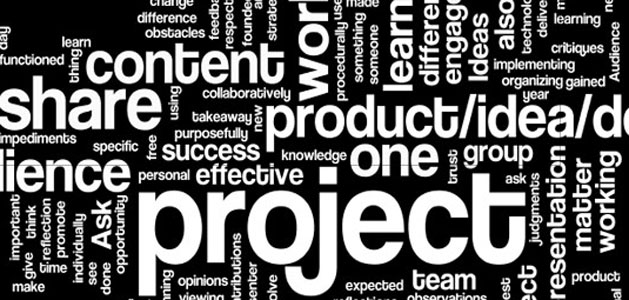

To make learning during the process visible and to facilitate assessment, project-based learning culminates in a final presentation of learning. Notice I didn‘t just say presentation, but presentation of learning. There is a difference. A big difference.
During the process of PBL, students receive continuous feedback from team mates, their instructor, coaches, mentors, and others involved in the project. Presenting the final product, idea, and any other relevant artifacts created during the process is a great way to celebrate success as well as get feedback. However, for purposes of growth and learning, presentations need to be more than an introduction to the product or learning artifact.
While there are times the presentation will include sharing information, a presentation of learning isn‘t a one-way lecture. In effective presentations of learning, everyone participates: the student presenting their learning, the audience, the facilitator.
Before presentations of learning begin, share questions that the presenters and audience members should be prepared to answer. Work to establish norms for sharing feedback.
Remind everyone that effective critiques are:
Begin transforming presentations into presentations of learning by making this distinction to your students. Let them know that you expect their final presentation to be a presentation of their learning through the project-building process, not just a demonstration of the product they create.
Presentations of learning should include what students learned about:
To promote reflection, you might ask them to also share:
The audience should be expected to give feedback on the project content and delivery. The audience should also share observations, reflections, and ideas brought up as students share their learning.
Ask the audience what they learned about:
Ask the audience to share opinions about the product/idea/design:
The instructor should share insights on the product, student presentations and reflections, and audience thoughts. They should also highlight issues and events that occurred for the presenter(s) during the process. Ask clarifying and open-ended questions that further group discussion.
Listen to critiques and feedback from the students and audience for insight into what the students have gained from participating in the project. This will enable instructors to reflect upon key elements to maintain in future projects and that can improve the process next time.
As students present their learning, write common themes, issues, and ideas in a place everyone can refer to when forming their own reflections and feedback.
Don't settle for making every presentation of learning an oral presentation or multimedia slide show. Students can also share projects through small group discussion, peer-to-peer meetings, or even in a mini-trade show or conference.

You may even want to separate the product presentation from the presentation of learning, since they may have competing goals. For example, if outside experts are judging a product prototype or design, the focus needs to remain on the product. The presentation of learning should take place at a different time.
You can also promote reflection and presentation of learning by asking students to complete a written self-assessment before presenting. You might ask them to reflect on:
It doesn‘t take major changes to transform a presentation into a presentation of learning. Simply asking for feedback and reflection about the product AND the process will help you get there.
Creative Educator can help you bring project-based learning to your school.
Learn More8 first projects to get students using technology
Creative, digital book reviews
Fun and powerful ideas with animated characters

Wixie
Share your ideas, imagination, and understanding through writing, art, voice, and video.

Rubric Maker
Create custom rubrics for your classroom.

Pics4Learning
A curated, copyright-friendly image library that is safe and free for education.

Wriddle
Write, record, and illustrate a sentence.

Get creative classroom ideas delivered straight to your inbox once a month.
Topics